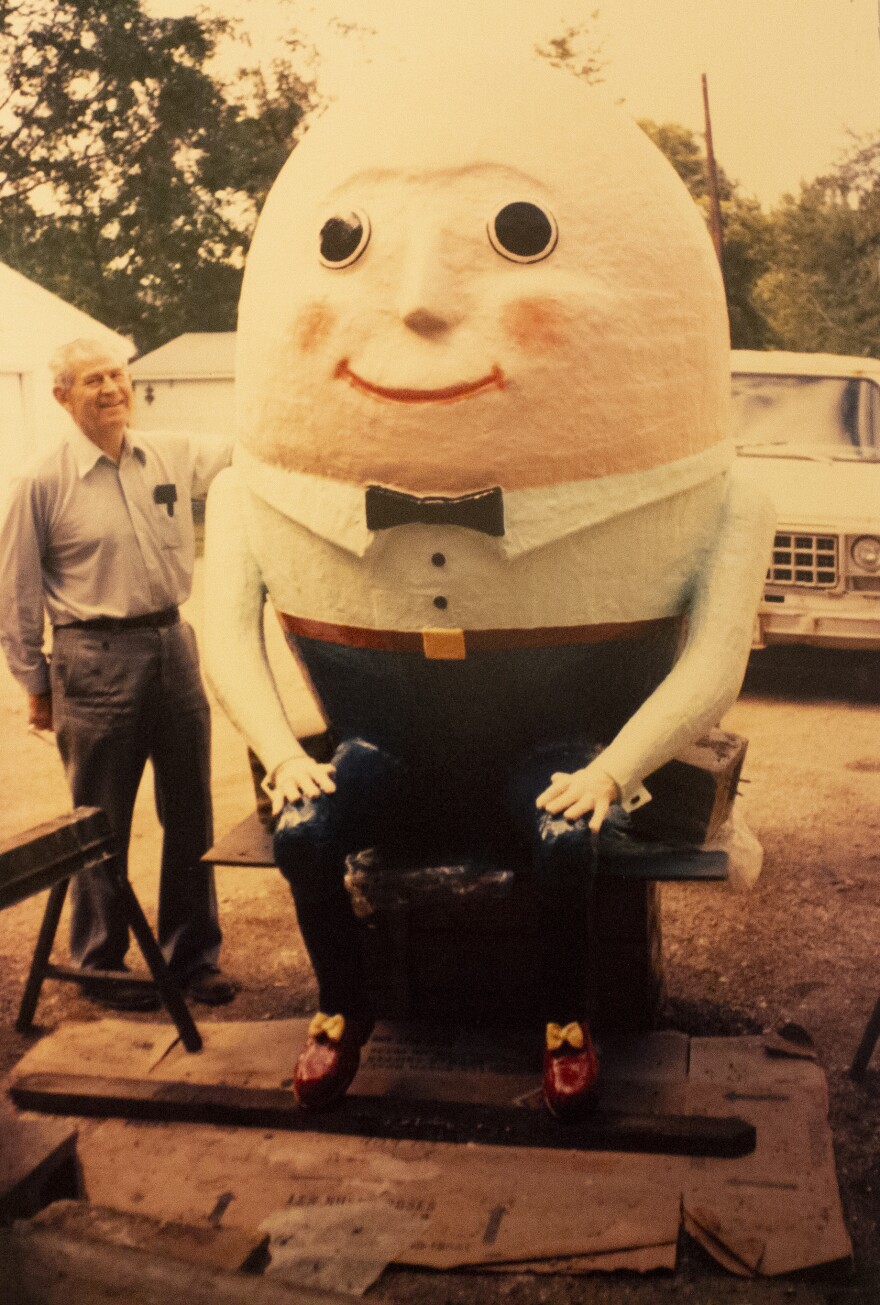Aberdeen had a big idea. It was 1969. People were experimenting with psychedelics. But the Aberdeen idea was more Plains than Golden Gate - some white rabbits might show up, but less as metaphors than rabbits.
Locals wanted a park dedicated to the vision of Aberdeen local and The Wonderful Wizard of Oz author L. Frank Baum. The Aberdeen Sertoma club got involved and developed a master plan that called for an artificial lake and a variety of nursery rhyme characters as well as characters from the Land of Oz.
Construction proceeded slowly, with only two fairy tale scenes created before 1980. Then a local florist named Leo Weber got involved.
Weber was already well known as a creative type -- in addition to floral arrangements, he was a taxidermist, and he had created a pair of pheasants for Aberdeen's Golden Pheasant festival in the 1940 -- but he was about to embark on probably his greatest creative period. He was 70.
The first installation he created was a two-story shoe-house based on the fairy tale The Old Woman Who Lived in a Shoe.
"He just worked on it late in the day or in between his business work," recalls Carol Weber Green, daughter of Leo Weber. Sometimes his projects drew a crowd. "Some of the pictures that my sister has of that shoe -- the children, some of them are my kids.
Weber did not have a college degree. The furthest he made it in school was eighth grade. He was a self-taught artist who harnessed his builder's skills (he built the family home himself) toward creative ends. Undoubtedly he was a prolific artist, but he may not have thought of himself that way.
"I don't think that came into his thinking at all," says Florence Kraus, who worked until retirement at the family floral shop. "I don't either," Carol Weber Green agrees. "He just knew he could make things and he continued to do that," recalls Kraus. "He made goose decoys. They were available for purchase, but he knew he could make them. So he did. That was his way of thinking, he thought he could do it. And so he did."
"It always was his idea that there should be more for children to do in the area. There, there were several city parks, the usual swings and slides and stuff. And he just thought there should be more entertainment for the children. So he was very willing to, he jumped right on the bandwagon."

From 1980 to 1983, Weber built installations including the shoe-house, the Cow Jumped Over the Moon, Cinderella, Goldilocks and the Three Bears, the Three Little Pigs, Frosty the Snowman, Smokey Bear, Mother Goose, Humpty Dumpty and Mary, Mary, Quite Contrary. Some, like the latter, have since been replaced due to damage or vandalism. Some, like his Moby Dick no longer exist at all.
Those that do often combine the realism of a taxidermist with the innocence and wonderment we hope for from a Humpty Dumpty.
Weber's creative explosion was contagious, as others began to contribute, populating the park with dozens of new fairytale sets in the 1980's -- 45 by 1988.
"Leo really was instrumental in the development of Storybook Land in those early years," says Doug Johnson, former Director of Parks and Recreation for Aberdeen, who worked with Weber both as a park director and a member of the Sertoma Club.
"Many of the displays, he would work on his own out of his flower shop. And then, some of the larger displays that Leo made, there were many Sertomans that assisted Leo because they were just really pretty massive projects for one person."
"Some of the displays, Leo would maybe use a mold, for example the horses [for Cinderella], there might have been a molds available. But some of the others, it was pretty much an artistic ability. Leo had to create those items. The shoe is a good example. There's really no plans for something like that. And you'd start from scratch and do some renderings and Sertoma Club would work with him to develop the concept. And then Leo would just go to work and use his artistic ability to create the display."
Art created for children, though its appeal often outlasts trendier adult-centered art work, tends to become anonymized. The creator fades away and the works become about the myriad of interactions between child and art. Leo Weber prbably would not have minded that at all, though remembering Leo Weber is a reminder of what an uncredentialed everyperson can achieve with some talent and a lot of work, a reminder that your best work might always be ahead of you. Weber was still working on Storybook characters until a year before he died, at the age of 87, in 1997.

